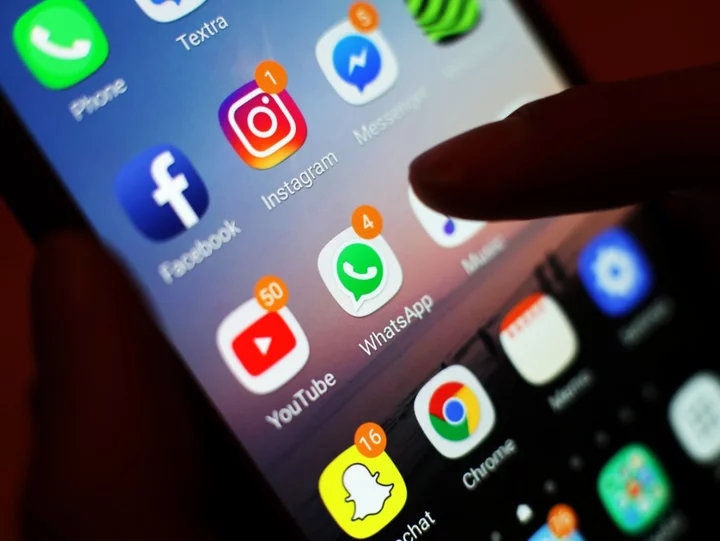
The best VPNs for your iPad
So you're considering investing in a VPN? That's the first step. The second step is
2023-07-18 17:45

Andrew Tate slams BBC reporter Lucy Williamson for working in company 'full of sexual predators', fans say 'treat her nice'
Andrew Tate said, 'I wonder what Lucy thinks about working for an organisation full of sexual predators and then trying to grill me on morality'
2023-07-09 15:56

Get a like-new Lenovo laptop plus Microsoft Office for $200
TL;DR: As of August 20, get a refurbished Lenovo ThinkPad 11e and a lifetime license
2023-08-20 17:55

PLTW Announces Pathogen Patrol™ Learning Experience on Roblox
INDIANAPOLIS--(BUSINESS WIRE)--May 9, 2023--
2023-05-09 23:28

U.S. senators announce subpoenas to Discord, Snap, X CEOs on child sexual exploitation
WASHINGTON U.S. Senators Dick Durbin and Lindsey Graham said on Monday that subpoenas have been issued to the
2023-11-21 00:19

TikTok users warned to be wary of the 'This Is Danny' dog scam
A TikTok user has issued a warning about an alleged dog scam circulating online. Noah (@noahglenncarter) claimed that people are sharing a photo of an injured dog named Danny covered in porcupine needles that need to be removed at the vet for a fee. He alleged that many accounts are cropping up online dedicated to helping Danny the dog – but they're all fake. "I really hope that not many people have fallen for this so far, but I highly doubt that because if you see this on your FYP, I imagine that you're gonna want to try as much as you can," Noah said. "Without knowing they're just trying to get your money from you, you're probably going to want to help this dog because it looks very, very painful." Sign up for our free Indy100 weekly newsletter Noah's clip was soon flooded with comments from fellow users: "THANK YOU FOR TALKING ABOUT THIS!!! It’s gotten so out of hand that it’s honestly tiring now," one person wrote Another added: "I swear I saw that picture in 2022 or so." Meanwhile, a third added: "This is wild, who in their right mind would ever do this." @noahglenncarter People are using this dog Danny to take what you have #foryou #danny #savedanny #foryou #dog The 'Danny photo' used in Noah's video originates from the JMK9 Dog Training Facebook page. In April, the page shared the image of the dog, writing: "This little lady couldn’t help herself and ran down a Porcupine. Any of the 3 most important commands in the world would have saved her from these daggers. Come, Leave It, Place. Don’t wait for your dog to come back to the house looking like a GSP / Porcupine Hybrid to teach these things." According to Know Your Meme, a TikTok account called "@savedannyy" cropped up online, with a slideshow of the dog. It reportedly asked for $900 to get the quills removing and provided a CashApp link to send money. Have your say in our news democracy. Click the upvote icon at the top of the page to help raise this article through the indy100 rankings.
2023-07-25 16:49

Warzone Content Creators Hype Up New Release, Should You Be Excited?
Warzone content creators like Aydan and Biffle have hyped up the new release, and fans should be excited to drop into the new map coming in MW3.
2023-10-06 01:54

Coinbase Shares Rise After Quarterly Revenue Tops Estimates
Coinbase Global Inc. shares rose after the largest US cryptocurrency exchange’s second-quarter loss narrowed and revenue exceeded estimates.
2023-08-04 04:45

Chinese EV startup WM Motor files for bankruptcy
BEIJING (Reuters) -Chinese electric vehicle startup WM Motor has filed for bankruptcy, marking the demise of a promising standout among
2023-10-10 14:22

Mortal Kombat 1 Countdown
Players are dying to dive into the gore fest that is Mortal Kombat 1. Here's how long they'll have to wait.
2023-08-25 02:16

Threads: Instagram boss says it will fix major problems with app, including using multiple accounts and feed
Instagram’s team is working on a number of updates for its new Threads app, its management has said. Meta launched Threads – a Twitter rival that is built by the Instagram team and uses its branding – late on Wednesday. It has already gained some 70 million users, capitalising on chaos and technical problems at Twitter. But it is still without a number of major features, including those that are readily available on Twitter. The head of Instagram, Adam Mosseri, has been responding to users on the Threads app itself promising that a number of those features are coming. Chief among them is the option to change between accounts. Even though Threads is a separate app from Instagram, users must sign up with an Instagram account – which is then stuck signed in, without the option to quickly switch between other accounts. Mr Mosseri said that and many other additional features were being worked on by its team. Those other tools including a devoted desktop version, better search and hashtags, and better integration between Threads and Instagram so that posts can be shared between the two. But perhaps the biggest request has been for a chronological feed that includes posts only from those accounts that a user actually follows. At the moment, Threads is built around one news feed that is filled with algorithmically chosen content, much of which comes from accounts that a user has not explicitly chosen to subscribe to. Mr Mosseri said that was being worked on, and could arrive in the “next couple weeks”, but it was not necessarily a priority. “I do think a lot of why people are getting so much engagement right now is because you don’t need to follow a bunch of people in order to discover a bunch of new accounts in feed,” he wrote. Threads has ruled out some expected changes, too. That includes direct messages, with Mr Mosseri suggesting that he did not want to give users another inbox to check, with Meta already offering a number of other messaging platforms. Both Mr Mosseri and his boss, Mark Zuckerberg, have ruled out any rush to put ads into Threads. Mr Zuckerberg said that the site would decide on ads when the app was moving towards a billion users, and that for now the company was working on getting even more scale. Read More Threads hits 70 million sign-ups on its second day People are realising something really worrying about Threads Twitter threatens legal action against Meta over new ‘Threads’ app
2023-07-08 01:46

EA Sports UFC 5's official soundtrack arrives, featuring Kid Cudi, Busta Rhymes, Killer Mike and more
Ahead of the game's release on Friday (27.10.23), fans can listen to the full soundtrack on Spotify.
2023-10-24 20:47
You Might Like...

Browser Swap: How to Switch From Google Chrome to Microsoft Edge

Ingram Micro Achieves AWS Premier Tier Services Partner Status in the AWS Partner Network

How to Get Nicki Minaj in Warzone

Elon Musk's tweets about Texas mall gunman spread misleading claims, question shooter's background

China defends ban on US chipmaker Micron, accuses Washington of 'economic coercion'

Intel’s Broad, Open HPC+AI Portfolio Powers Performance, Generative AI for Science

WhatsApp unveils new feature to protect ‘your most intimate conversations’

MacStadium Enables Seamless High-Definition Streaming Via New Orka Workspace™ with Pulse
